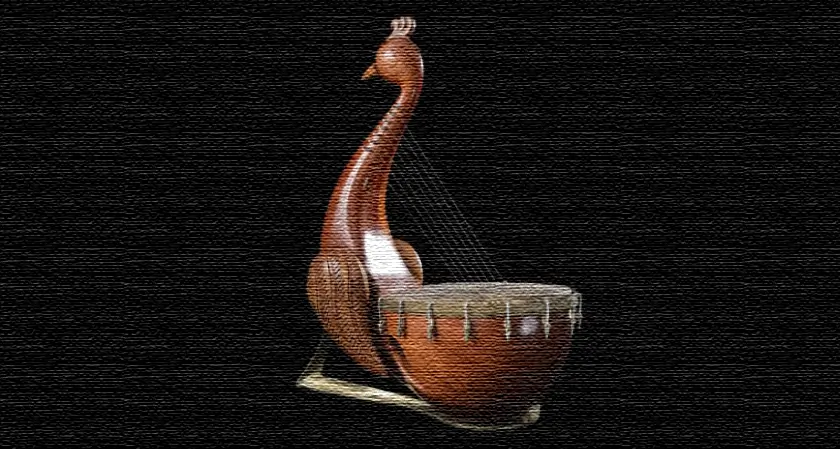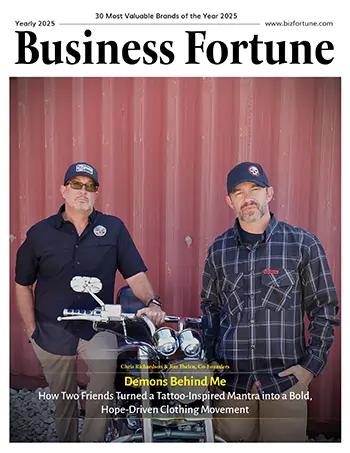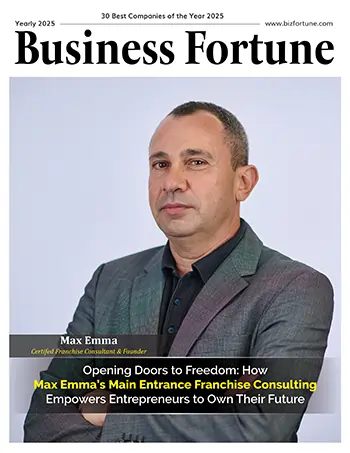Home Industry Art and Music The Yazh: Echoes of Ancient Ta...
The Yazh: Echoes of Ancient Tamil Music Reborn
Art and Music

Business Fortune
02 September, 2025
Ever wondered what your ancestors were jamming to 2,000 years ago? While we're busy scrolling through Spotify playlists, they have something far more magical—the Yazh. This stunning harp-like instrument wasn't just background music; it was the soundtrack to Tamil civilization. Poets turned Thirukkural verses into songs, lovers sang under the stars, and devotees felt close to the divine through its music. The Yazh had it all—from pocket-sized seven-stringers to grand 21-string masterpieces. Here's the incredible part: The Yazh is singing once more after being silenced for centuries and confined to history books and museums. This ancient treasure is being revived by modern musicians, demonstrating that certain tunes are too lovely to be buried. Brace yourself so that I can take you back to the era that you have been missing all along.
A Journey through Time
According to ancient texts from the third Sangam era, Tamil rulers adored the Yazh, a string instrument that resembles a harp and dates back around 2,000 years. According to a Buddhist picture from the Bhārut that shows a woman playing a curved harp, the instrument has been played in India from at least the second century BCE. This ancient instrument is a true progenitor of contemporary stringed instruments, representing one of humanity's first attempts to develop intricate melodic structures.
The Yazh was named after the mythical creature Yali, whose head was carved at the end of the instrument’s stem. The dimensions of the instrument, which alter its sound, are influenced by the animal that was used to create it. In addition to being aesthetically pleasing from a cultural standpoint, the shapes make it easy to include the golden ratio curve into the instrument's arch.
Varieties and Virtuosity
Several variations of the Yazh were acknowledged by the ancient Tamil community, each with a distinct musical function. The 'big yaazh', also known as Periyaazh, had 21 strings, while its little sibling, Siriyaazh, had just seven. Furthermore, Pattuppattu mentions two other yaazh varieties: the seven-stringed Sakottuyaazh and the 19-stringed Makarayaazh.
The intricate musical tradition of ancient Tamil society is reflected in this diversity of design. While the seven-string versions provided mobility and simplicity for daily performances, the 21-string Periyaazh would have been able to produce intricate melodic patterns and harmonies. From small-scale chamber concerts to large-scale temple rites, artists were able to select instruments that best fit their unique musical requirements due to the different string counts.
Musical Compositions and Songs
In ancient Tamil culture, the Yazh served as the primary instrument for all forms of music. It was used by musicians to play religious hymns, love songs, and literary works from the Sangam. The Yazh was used by musicians to set philosophical verses composed by poets such as Thiruvalluvar for the Thirukkural to music. The instrument was suitable for romantic tunes as well as moral lessons. Four different kinds of yazhs are mentioned in the epic Silappatikaram, most likely because a complicated plot would require different instruments for various moods and circumstances.
In the present era, the Yazh has returned. Songs like "Agandai Tegam," composed by modern musicians, take traditional Sangam themes of love overcoming ego and give them a new twist. People are still drawn to these antiquated concepts today.
During the sixth to tenth centuries, when Tamil Saiva saints like Appar, Thirugnana Sambanthar, and Manikkavasagar were writing devotional hymns, the instrument was also very important. These played a significant role in the spread of the Bhakti movement throughout South India. The musical underpinnings of this spiritual movement were supplied by the Yazh, which accompanied hymns that are sung today.
The Yazh in Everyday Life
This instrument's beauty lies in the fact that it was originally played by the ancient Panars, a community of musicians, as well as in temples and royal courts. The Yazh's broad appeal and cultural significance are demonstrated by its extensive use across many socioeconomic classes. It was intricately woven into Tamil society as a whole and wasn't only a privileged tool used in royal courts.
The Yazh was utilized by musicians to support vocalists as well as a solo instrument. It may be heard in small gatherings where a lone musician would showcase their abilities or in larger ensembles where it facilitated storytelling and dancing. It was quite necessary for the majority of musical performances at the time because it was adaptable enough to fit with everything from other Sangam literary works to classical Tamil epics like Silappatikaram.
The Decline and Modern Revival
Beginning around the 7th century, the Tamil yazh and the Indian harp-style veena both began to deteriorate. Yal gradually faded into the background as the fretted vina came into view. The Yazh was gradually driven into obscurity by the emergence of newer instruments, changed musical preferences, and evolving cultural concerns. However, the Tamil musical culture essentially disappeared over time.
However, the decline wasn’t where the story ended. It was restricted to history books and museum exhibits for centuries until Tharun took on the task of bringing it back to life. Based on literary descriptions and historical evidence, modern musicians and cultural preservationists are putting forth endless effort to recreate these old instruments.
The Yazh's Legacy
The Yazh is more than just an old instrument—it reflects the deep musical knowledge and skill of ancient Tamil society. People are providing us with an opportunity to comprehend how our ancestors expressed their emotions and spiritual beliefs via music by working to revive it today.
With all the digital music and electronic instruments we have today, the Yazh’s natural, handmade sound feels very special. It seems to have a clear connection to Tamil Nadu's traditional music. It's incredible to hear these classic songs revived, and musicians and music lovers are now starting to uncover this buried sound.


































